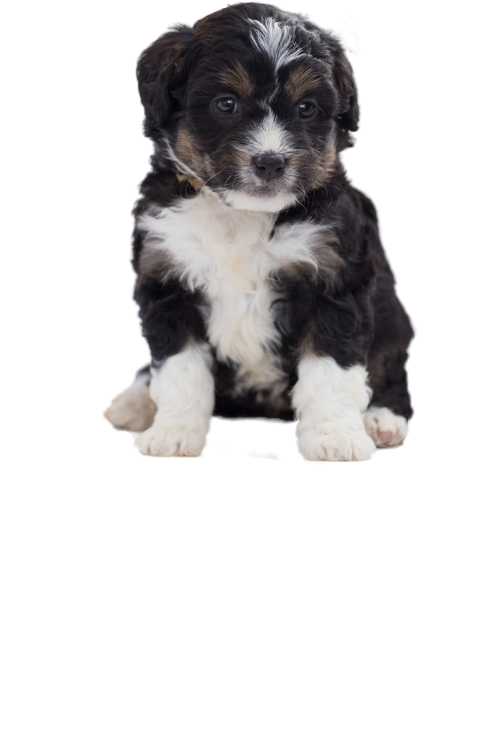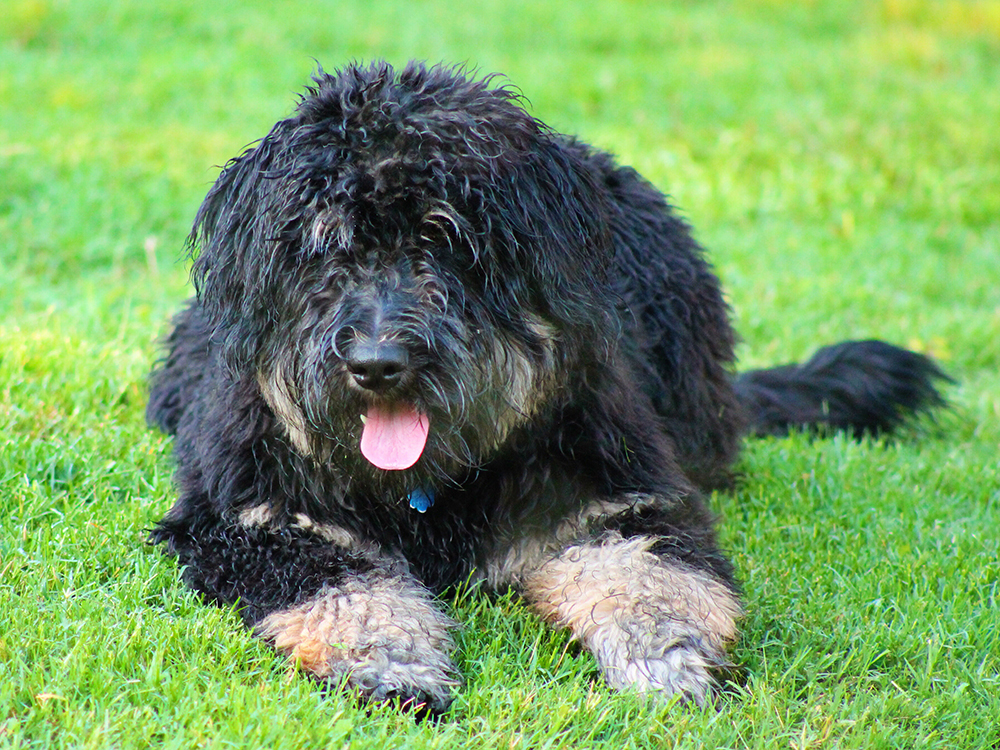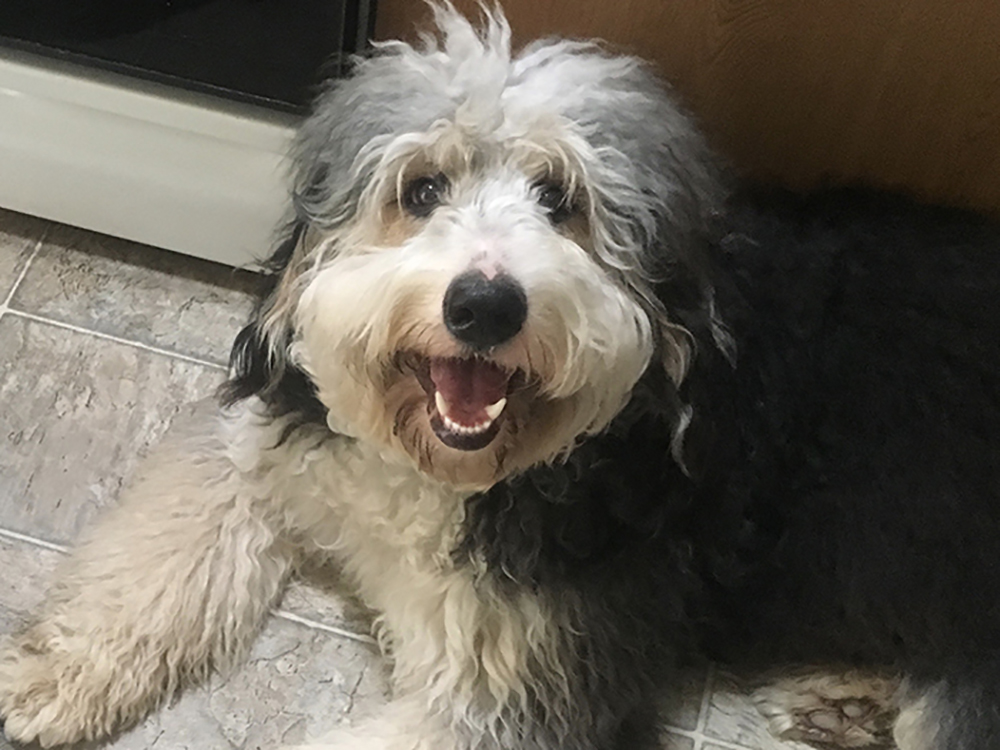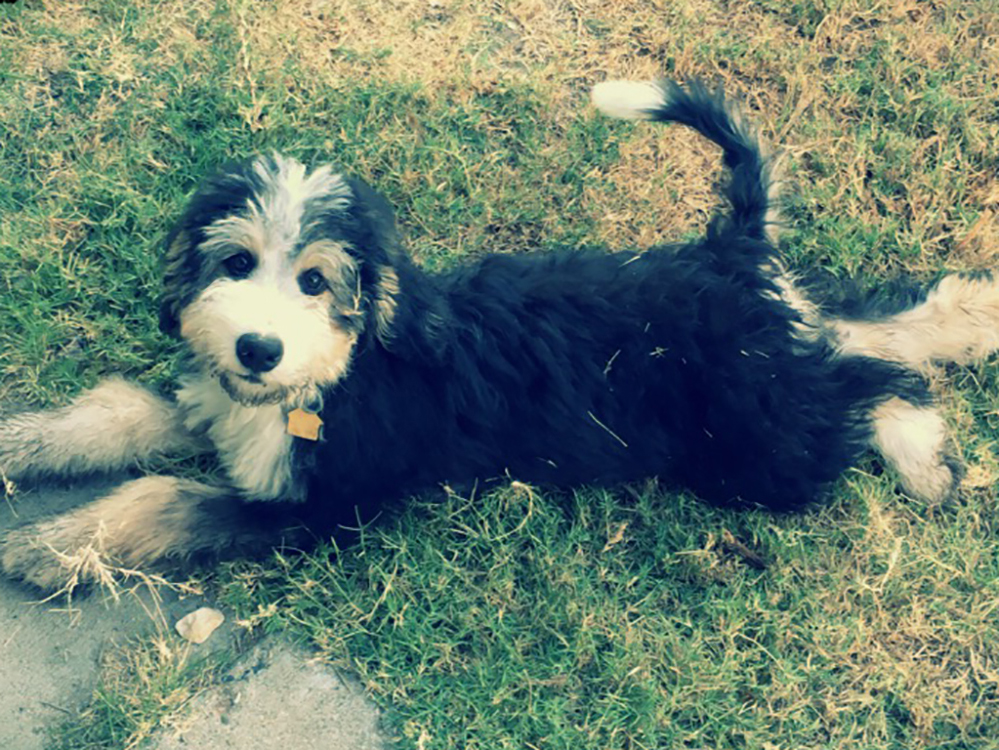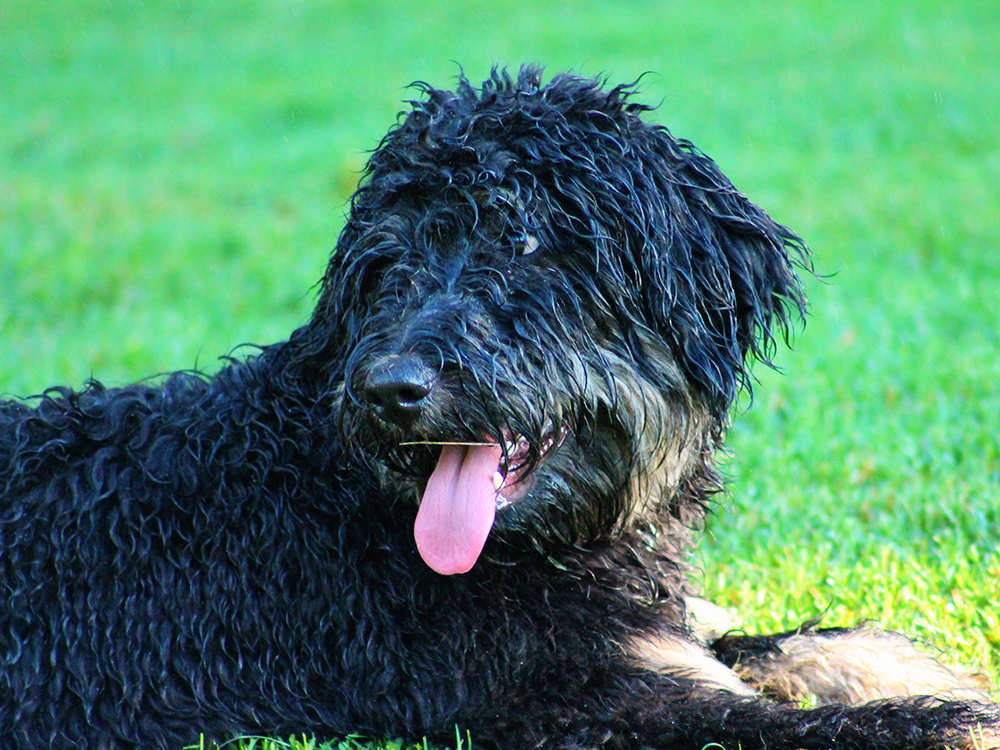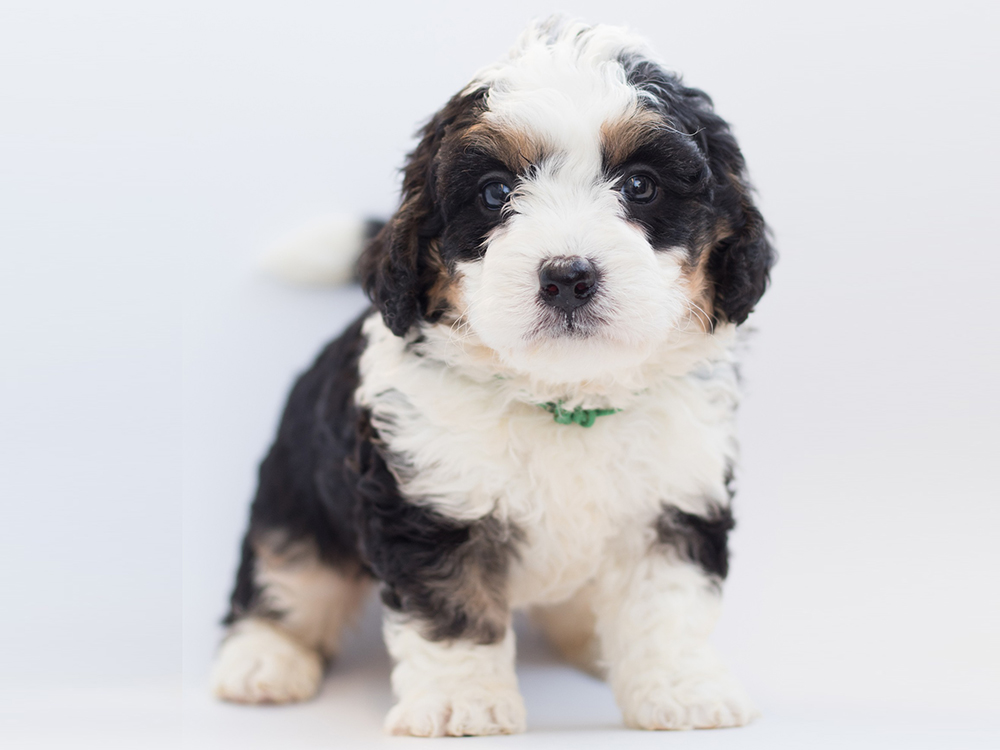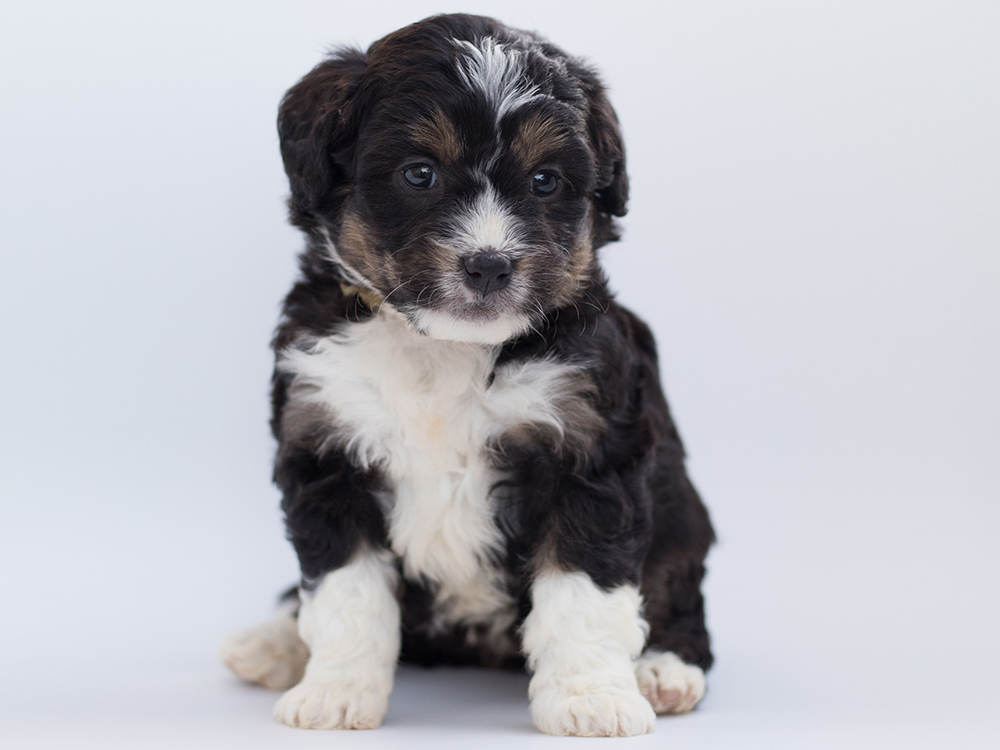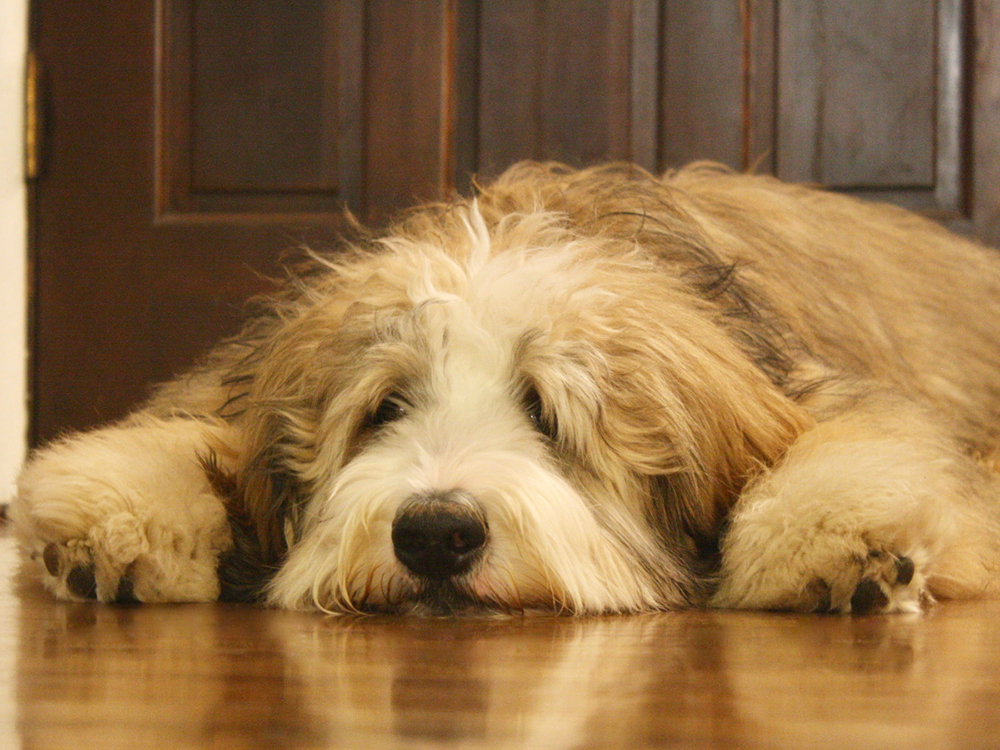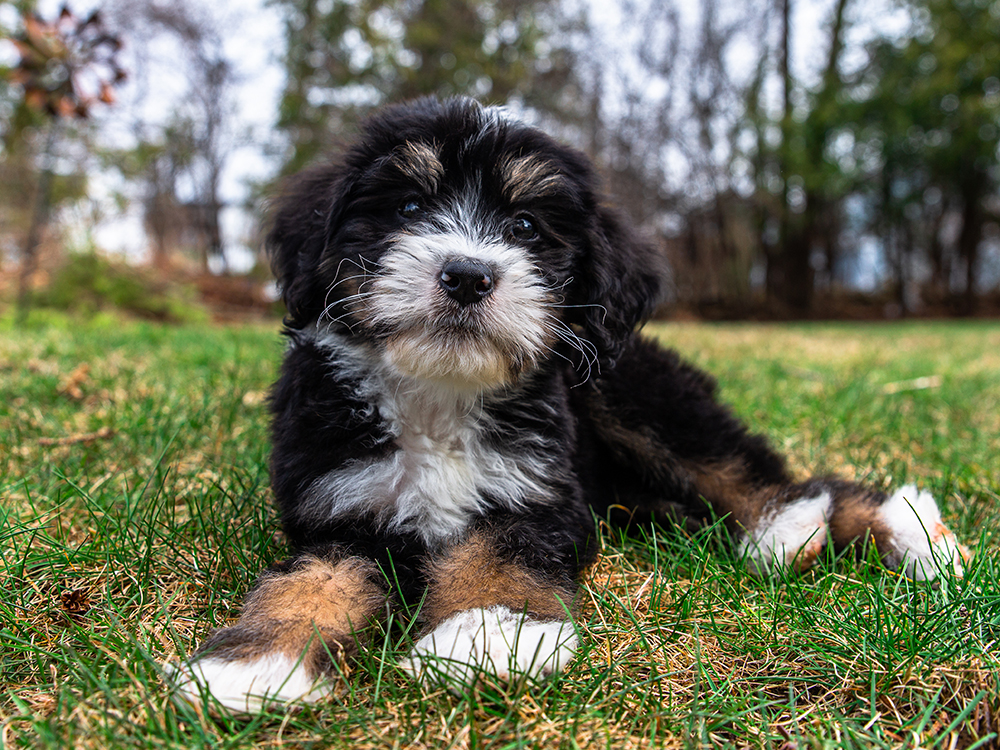
Bernedoodle Breed Pictures
Vital Breed Stats
| Height: | 7 - 8 cm M | 7 - 8 cm F |
| Weight: | 88 - 110 kg M | 68 - 101 kg F |
| Life Expectancy: | 15 - 18 years |
| KC Registered: | No |
Breed Characteristics
| Size: |  |
| Grooming: |  |
| Exercise Level: |  |
| Trainability: |  |
| Barking Level: |  |
| Good with Children: |  |
| Good with other pets: |  |
| Affectionate: |  |
| Protective: |  |
| Cost to Keep: |  |
Give a thumbs up if you love the Bernedoodle

0
More About the Breed
History
What’s a Bernedoodle?
It is a designer breed, is a mix of the Poodle and Bernese Mountain dog. He was solely created to be a wonderful family companion. The breed inherited the Bernese’s affectionate and amusing nature and the poodle’s intelligent mind.
Origins of the Bernedoodle
The Bernedoodle dog breed is thought to have existed for a long time. However, it was Sherry Rupke of Swissridge Kennels that was recognised as the first breeder to create this mixed breed. Back then, Sherry was separately breeding the golden Labradoodle and the Bernese Mountain dog.
It saddened her that the Bernese breed has such a short lifespan. So, she thought of making a new breed similar to the golden Labradoodle by using the Bernese. Thus, she cross-bred a poodle with a Bernese Mountain dog. Her efforts proved to be fruitful as the first Bernedoodle pups were born in 2003 in Canada.
Appearance
How big does a standard Size Bernedoodle get?
A fully mature standard Bernedoodle may grow approximately 23–29 inches tall. The smaller variation of the breed such as the mini Bernedoodle will have a height of 18–22 inches once he matures. Meanwhile, an adult tiny Bernedoodle will stand about 12–17 inches tall.
How much does a Bernedoodle weigh?
The weight of an adult standard Bernedoodle is approximately 50–90 lbs. A grown-up mini Bernedoodle weighs 25–29 lbs whilst a fully mature tiny Bernedoodle’s weight is about 10–24 lbs.
What does a Bernedoodle look like?
The Bernedoodle’s body is sturdy and square-shaped. He has a triangular muzzle. His ears hang down along his head. He has black oval eyes that are set far apart. His tail is bushy and carried high. He possesses thick, cushioned pads.
One has a predominant Bernese gene is more likely to be taller and have a more defined strong equilateral physique. Their coat often varies depending on what parent breed's gene prevails. One that has more Bernese blood will have straighter coats. Those that acquired more of the poodle genes have more chance of inheriting curly and wavy coats.
Their coat is dense, which gives him protection from the heat and insulation during the cold season. He has a variety of coat colours including white, brown, black, blue, grey, silver, fawn, apricot, cream, café au lait, black and white, and black and brown. There’s also the tricoloured coat that is composed of black, white, and brown.
Grooming
Is Bernedoodles hypoallergenic?
Their hypoallergenic coat is one of the things that are sought after by many dog owners. It is worth noting that a Bernedoodle with a curly coat sheds less, thus producing minimal dander. This dog is more fitting for allergic people. The ones that possess straighter coat moults often, which makes him less hypoallergenic.
What are the Bernedoodle’s grooming needs?
The ones with a straight coat require at least once a week of brushing. However, since he sheds more, be prepared to brush him frequently during his moulting season. The Bernedoodle dog with curly hair needs more brushing.
Brushing must be done at least three to four times a week to prevent mats and remove debris. Be sure to take him to the groomer if his coat grows too long. When it comes to bathing, only do it once he becomes too dirty or smelly. Frequent washing will dry his skin and hair and will cause skin problems.
Clip his nails every three to four weeks to prevent splitting or cracking of nails. The Bernedoodle has droopy ears, so cleaning them often is a must to prevent ear infections.
Gum diseases are common in dogs, incorporate a daily dental routine in his daily grooming.
Temperament
The Bernedoodle is primarily bred to be a great family dog. He is expected to be extremely friendly and fond of his human companions. He is a Velcro dog that wants to stick close to his loved ones. He makes a good companion dog. Because of his loyalty to his owners, he can be protective of them and be indifferent around strangers.
His love for his family has a downside. If left alone for too long, the Bernedoodle may have separation anxiety. It can cause him to develop unwanted behaviours such as incessant barking, digging, and ruining furniture. Therefore, make sure that he has a companion with him throughout the day when the rest of the family is out.
The Bernedoodle is great for families with children and other pets. He is a lively dog that thoroughly enjoys fun and games. However, supervision is still recommended as he could be aloof at times and might cause an accident. Adults need to teach younger children how to gently handle dogs, too, to prevent them from hurting the dogs.
Intelligence
Early socialisation paired with proper training is crucial. This will greatly help the Bernedoodle to mature into an amiable and sociable dog. Lack of socialisation may lead him to become vicious or timid around people and other animals.
When it comes to training, the Bernedoodle is quick-witted and very eager to please his owner. However, he has a slight stubbornness in him so be patient.
Training should be firm and consistent, but also gentle. Rough training will only lead him to defy you. Instead, use positive reinforcement training such as praising and giving him treats to encourage him even more.
Fun Facts
- The Bernedoodle commonly has an affinity for snow and water. He inherited this trait from his parent breeds. The Bernese mountain dog enjoys the snow, although he may tend to dislike water. Meanwhile, the Poodle is known to love swimming.
- There are various types of Bernedoodle generations. F1 is a first-generation Bernedoodle that is 50 per cent poodle and 50 per cent Bernese mountain dog. An F1b Bernedoodle is 75 per cent poodle and 25 per cent Bernese. An F2 Bernedoodle is a cross-breed between two different F1 Bernedoodles.
- Breeders do not recommend this as the offspring is likely to have genetic health problems. An F2 Bernedoodle is 62.5 per cent poodle and 37.5 per cent Bernese mountain dog.
Nutrition
Feeding
Health
- Elbow and Hip Dysplasia
- Eye problems such as Canine cataracts
- Hyperadrenocorticism
Exercise
Cost of Ownership
What impacts the cost of Bernedoodles?
If you are set in getting a Bernedoodle puppy, it may cost around £800 to over £2,000. Many factors can affect the price tag. These include:
- Number of Quality BreedersThe breed is fairly new, so there are only a few reputable Bernedoodle breeders. This can hike up the cost of the puppy.
- New BreedThe Bernedoodle breed is in demand, but because the breed is new, puppies come in low quantities. The low supply and high demand can make the puppy costly.
- Coat ColourA Bernedoodle’s coat colour does have an impact on the price. Tricoloured ones are found to be the most expensive.
- Health TestsResponsible breeders always make sure to produce a healthy litter. They may pay expensive fees for health screenings.
Dog food expenses may range between £200 and £300 for the toy and miniature Bernedoodle. Meanwhile, it can cost about £300 to over £400 for a standard Bernedoodle. Providing him with basic items including bedding and toys is approximately £200–£400.
Vet check-up fees are around £30 per session. The price for initial vaccines is about £100. Yearly boosters may cost around £50 per shot. Getting pet insurance for a healthy puppy will cost between £20 and £30 a month on average.
Bernedoodle Breed Highlights
- The Bernedoodle enjoys being close to his family and engages in goofy antics that will bring out smiles and laughter.
- He is good around children and other pets with the help of early socialisation.
- He responds well to firm and consistent training and positive reinforcement.
- He needs a minimal amount of exercise throughout the day.
